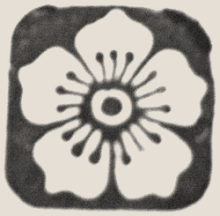Over the winter holidays, Dan took me to see this wonderful exhibit at the Asian Art Museum in San Francisco. If this exhibit comes anywhere near you, I suggest you go and see it. The treasures were amazing, and the story of their discovery and survival was fascinating. The exhibit was put on by the National Endowment for the Arts, National Geographic, the National Museum of Afghanistan, and many other generous donors. There is also a great show done by National Geographic under the same name as the exhibition as well as a wonderful website all about the exhibit. If you can catch the show, it give a great explanation of all the artifacts, much better than I could ever do.
I took these snapshots of the photographs from the brochure you receive for the exhibit. All the photographs were professionally taken for the exhibit, and as a head's up, you are not allowed to photograph in the exhibit itself. Be prepared to shell out for the book in the gift shop if you want pictures or hold on to your brochure like I did.
Here is a map of the general areas where the artifacts were found.
Most of the artifacts were found in the 1960's and 1970's. The first set of items were found in 1966 when farmers stumbled across the items near the village of Fullol. It was a burial cache that contained evidence of the Oxus civilization in Afghanistan. These pieces below are from that area:
The picture shows a ram ornament, a bowl, and a neck ornament. One of the things I found really interesting is how jewelry pieces I have from modern Afghanistan are still very similar to that necklace. The tea drop motif with the coins still is popular today.
The exhibit then showed an interesting intersection of Greek styles of architectural elements as well as statues and artwork that looked like they could be found in Italy just as easily.
The top picture is of a ceremonial plaque of Cybele, the others are a portrait of the gymnasium director, Strato, and a Corinthian style capital stone.
In the 1930's, there was an earlier find by French archaeologists that found two sealed and undisturbed store rooms that contained all sorts of luxury goods from the Silk Road trade routes. This site is called Begram. There were four rooms full of items. The items there were very interesting and to me showed the diversity of the area the best. A Greek influenced item would be right next to an ivory carving that seemed to be from India, and still there were pieces of jewelry that had motifs common to Pakistan and Afghanistan itself. The things that I found the most intriguing was all the glass vases. Most of them looked like they were just made the other day. They were still flawless after all this time and all the wars they have witnessed. Some were also painted with interesting scenes like the one pictured below.
My favorite part of the exhibit was the items found at Tillya Tepe. This was a burial ground for a warrior and his household. The area was located and excavated in 1978 by a joint Afghan-Soviet team, but the excavation had to end early due to the conflict between the two countries. The burial mound was made similar to Central Asian nomadic burial areas, only instead of making the hill themselves, they used an existing one. There was a sword with a golden hilt:
There were also many small ornaments made from gold and turquoise. Most of them would have been sewn directly onto the now missing burial shrouds. They were delicate flowers and tear drops. Some of the more ornate pieces were the clasp and belt buckle located below.
My most favorite item in the exhibit was the crown worn by the highest ranking woman found at the burial mound. She was most likely the wife of the warrior buried there. This crown was not only delicate and beautiful, it was functional too. The crown was comprised of five trees that interlock into each other to form the crown. When traveling, the crown can easily be disassembled into the five pieces and can be carried flat for ease of travel. Genius!
Beauty and function! You can't get any better than that. The items in the tomb show the influence of Chinese motifs, Russian bears as on the sword, Greek gods and goddesses, Indian and Persian style motifs in the jewelry, as well as local influences for the choice of materials the items were made of. It was a great example again of the nomadic lifestyle and influence that seems to rule the area.
I found after viewing this exhibit that some of my instinctual choices for materials and motifs in my bellydance costumes, especially the belts, are right. I guess I should follow my instincts on things more often. I was most impressed with my instinct to choose the fabrics that I did for my current line of cholis. The motifs on the choli fabrics were visible all over this exhibit. It gave me some real confidence in my choices, or a sense that certain motifs are just universal. Much to ponder.






No comments:
Post a Comment